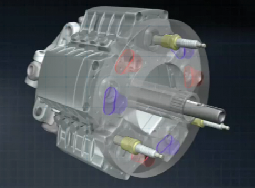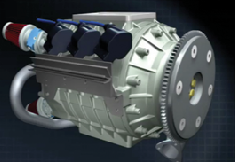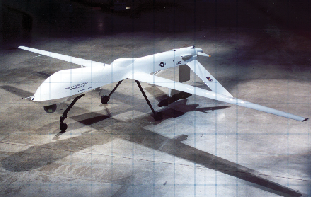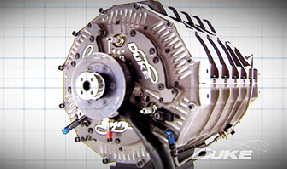THE MULTI-FUEL DUKE ENGINE
The current spark ignition (SI) Duke engine offers the potential to operate on all of the alternate fuels generally considered suitable for a conventional SI engine with little or no development. "Bio-fuels" are alternative fuels derived from vegetable feedstock that can be formulated to provide a basis or blending component for many of the alternate SI and Compression Ignition (CI or "Diesel Cycle") fuels, the most common being bio-diesel (for CI) and bio-ethanol (for SI).
WHAT ARE ALTERNATIVE FUELS?
Alternative fuels fall into 2 groups
1. Those generally suitable for SI operation include: Gasoline(s), Methane, LPG, Hydrogen, Ethanol, Methanol,
2. Those generally suitable for CI operation include: Diesel, Dimethyl ether (DME), bio-diesel, vegetable and animal oils, Kerosene.
THE DUKE ENGINE ADVANTAGE
THE DUKE ENGINE ADVANTAGE
The SI Duke engine has shown a resistance to detonation (potentially damaging auto ignition) that is superior to conventional combustion engines. This is in part due to lower maximum wall temperatures in the combustion chamber relative to a conventional engine, stemming from the lack of hot exhaust valves in the Duke combustion system.
DUKE ENGINES AND COMPRESSION IGNITION
Duke engines operating on a Compression Ignition cycle are envisaged, but not currently developed.
By the nature of CI engines, high cylinder pressures lead to high mechanical loads requiring heavier engine structures. Diesel engines historically have much heavier engine structures than SI engines, and so have been absent from weight critical applications such as outboard motors and aircraft.

As with the current SI Duke engine, future CI Duke engines may be expected to yield weight advantages over a conventional engine and so offer the prospect of extending the use of CI engines in some weight critical applications.
A Duke CI engine would be expected to operate with 3 injectors for a 5 cylinder engine, offering a major cost advantage with modern Diesel injectors being particularly expensive.
A Duke engine developed to run on a CI cycle may be expected to run on all alternate fuels typically considered suitable for CI Diesel, with all the relative ease of operation and benefit of operation similar to that with their use in conventional CI engines.

The multi-fuel Duke continued –
THE DUKE ENGINE ON KEROSENE
The Duke detonation resistant characteristic opens up an exciting prospect of operating the Duke engine on kerosene. Operating a 4 stroke SI Duke engine on kerosene based fuels holds many attractions for aviation and military applications, and offers an opportunity to offer a unique product into a significant market gap.
Initial testing with an unmodified Duke engine has given encouraging results, even with it’s higher than conventional compression ratio of 12.5:1. A Spark Ignition Duke engine optimised to run on kerosene, offers the prospect of highly attractive weight and size

It should be noted that in the 20 to 1000 kW engine range, most kerosene capable engines are CI and therefore necessarily heavy. Even a significantly de-rated kerosene fuelled SI Duke engine offers potential best in class power density (kW/kg) when compared to typical compression ignition engines. Duke Engine's current plan is to return to the Dynamometer in 2011 with a Duke engine specifically designed to operate on kerosene.
FLEX – FUEL AND VARIABLE COMPRESSION
It may be desirable to operate the same engine on a range of alternate fuels with limited "limp home" or fully optimized function on each fuel. In an SI engine, the compression ratio is likely to be the largest single compromising characteristic that limits the ability of a single engine to operate effectively on a range of fuels. The ability to vary compression ratio should be recognized as a highly desirable feature in a flexible fuel SI engine, especially where optimized performance on each fuel is sought. Variable compression ratio, though desirable, is not easy to implement in a conventional engine.
However the Axial arrangement of the Duke engine lends itself to the addition of variable compression ratio without adding significant size, weight or complexity
The relative ease of incorporating variable compression ratio is a major advantage of the Duke axial engine layout, with detail design and associated patent protection in development.

